
 |
 Free Download Microbial Stress Tolerance for Biofuels: Systems Biology By Z. Lewis Liu (auth.), Zonglin Lewis Liu (eds.) 2012 | 310 Pages | ISBN: 3642214665 | PDF | 5 MB The development of sustainable and renewable biofuels is attracting growing interest. It is vital to develop robust microbial strains for biocatalysts that are able to function under multiple stress conditions. This Microbiology Monograph provides an overview of methods for studying microbial stress tolerance for biofuels applications using a systems biology approach.Topics covered range from mechanisms to methodology for yeast and bacteria, including the genomics of yeast tolerance and detoxification; genetics and regulation of glycogen and trehalose metabolism; programmed cell death; high gravity fermentations; ethanol tolerance; improving biomass sugar utilization by engineered Saccharomyces; thegenomics on tolerance of Zymomonas mobilis; microbial solvent tolerance; control of stress tolerance in bacterial host organisms; metabolomics for ethanologenic yeast; automated proteomics work cell systems for strain improvement; and unification of gene expression data for comparable analyses under stress conditions.
 Free Download Microbial Plant Pathogens-Detection and Disease Diagnosis:: Viral and Viroid Pathogens, Vol.3 By P. Narayanasamy (auth.) 2011 | 321 Pages | ISBN: 9048197538 | PDF | 4 MB Viruses, with the primitive structural features are capable of causing diseases in all life forms on the earth. With limited morphological characteristics of the virus particles and lack of physiological functions, the need for the development of techniques based on the characteristics of the viral proteins and genomic nucleic acids was realized in order to detect, identify, differentiate and quantify viruses in the infected plants/planting materials with or without symptoms of infection. Immunoassays based on the antigenic properties of viral capsid proteins have been successfully applied for the detection of viruses in the symptomatic and asymptomatic crop and weed host plant species as well as in the vectors that are involved in the transmission of the viruses infecting crop plants. Development of monoclonal antibody technology has enhanced the sensitivity and specificity of immunoassays especially applied for the differentiation of strains of viruses with different virulence levels. Nucleic acid-based techniques have been demonstrated to have higher levels of sensitivity, specificity, reliability, reproducibility and rapidity. The viroids with only an RNA molecule have been detected by techniques based on the biological characteristics in certain cases. Application of immunoassays for viroid detection is not feasible because of the absence of a protein component that is present in the viruses. Nucleic acid-based techniques are the most reliable and sensitive tests for detection, identification and differentiation of viroids present in plants and planting materials. With the aim of providing a comprehensive knowledge of detection of viruses and viroids and diagnosis of the diseases caused by them, information distilled from extensive literature search is presented to fulfil the requirements of the researchers, teachers and graduate students of various disciplines of biological sciences. Inclusion of numerous protocols in appropriate chapters as appendix is a unique feature of this volume to enable the scientists to select the suitable methods for the various investigations.
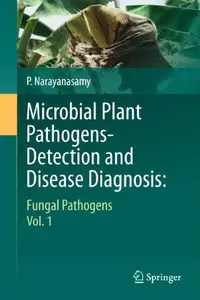 Free Download Microbial Plant Pathogens-Detection and Disease Diagnosis:: Fungal Pathogens, Vol.1 By P. Narayanasamy (auth.) 2011 | 291 Pages | ISBN: 9048197341 | PDF | 4 MB Plants are infected by different microbial pathogens, of which fungal pathogens form the highly evolved and earliest recognized group. The morphological, biological, biochemical and physiological characteristics have been used for the detection, identification and differentiation of fungal pathogens up to species level. Pathogenicity on a set of differential host plant species or crop cultivars has been useful for the identification of physiologic races existing within a morphologic species/variety. As the techniques based on the above mentioned characteristics require long time and yield inconsistent results, the need for the development of techniques with greater accuracy, reliability, reproducibility and capable of providing the results rapidly was realized. Immunoassays have been shown to be effective in detecting several fungal pathogens present in plants, planting materials, soil, water and air. Development of monoclonal antibody technology has greatly enhanced the sensitivity and specificity of detection, identification and differentiation of fungal species and varieties/strains. Nucleic acid-based techniques involving hybridization of probes with complementary sequences of the target pathogen(s) or amplification of specific sequences of the target pathogen DNA/fragment have been demonstrated to be the most efficient among the diagnostic techniques currently available. This volume provides exhaustive information on various methods of detection of fungal pathogens and the diagnosis of the diseases caused by them based on extensive literature search that will be useful to the researchers, teachers and graduate students of different disciplines of biological sciences, in addition to the extension pathologists, personnel of plant quarantines and certification programs. Presentation of a large number of protocols is a unique feature of this volume to facilitate selection of appropriate techniques for different investigations.
 Free Download Microbial Plant Pathogens-Detection and Disease Diagnosis:: Bacterial and Phytoplasmal Pathogens, Vol.2 By P. Narayanasamy (auth.) 2011 | 256 Pages | ISBN: 9048197686 | PDF | 4 MB The bacterial and wall-less phytoplasamal pathogens are comparatively much smaller than fungal pathogens. The morphological characteristics of bacterial pathogens have limited application for their detection and identification. Hence, cultural, biochemical and physiological characteristics have to be determined for the detection and identification of bacteria up to generic/species level. Immunoassays have been shown to be highly efficient for detection, identification and differentiation of isolates, strains and/ or pathovars of bacterial species. Application of various nucleic acid-based techniques based on hybridization of probes with complementary sequences of target bacterial pathogen DNA and / or amplification of unique sequences of the target bacterial species has been demonstrated to yield reliable and reproducible results rapidly. The nonculturable phytoplasmas have to be detected in plants, planting materials and the vectors involved in the transmission of these disease-causing agents from plant to plant. They have been identified and classified primarily based on the techniques based on the genomic nucleic acid characteristics. The comprehensive information presented in this volume, following extensive literature search is aimed to provide all that is required by the researchers, teachers and students of various disciplines of biological sciences, in addition to the extension pathologists, and personnel of plant quarantines and certification programs. The inclusion of a wide range of protocols is the unique feature of this volume enabling the scientists to choose the methods for their investigations. 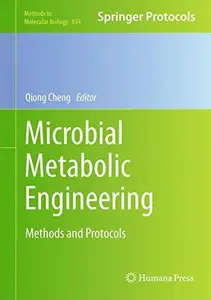 Free Download Microbial Metabolic Engineering: Methods and Protocols By Julia Jüergensen, Nele Ilmberger, Wolfgang R. Streit (auth.), Qiong Cheng (eds.) 2012 | 319 Pages | ISBN: 1617794821 | PDF | 5 MB Metabolic engineering is the practice of genetically optimizing metabolic and regulatory networks within cells to increase production and/or recovery of certain substance from cells. In Microbial Metabolic Engineering: Methods and Protocols expert researchers in the field detail many of the methods which are now commonly used to study metabolic engineering. These include methods and techniques to engineer genes and pathways, use of modern biotechnology tools in microbial metabolic engineering, and examples of metabolic engineering for real world applications such as whole cell biosensors and acetate control in large scale fermentation. Written in the highly successful Methods in Molecular Biology™ series format, chapters include introductions to their respective topics, lists of the necessary materials and reagents, step-by-step, readily reproducible laboratory protocols, and key tips on troubleshooting and avoiding known pitfalls.Authoritative and practical, Microbial Metabolic Engineering: Methods and Protocols seeks to provide researchers with an overview of key topics on microbial metabolic engineering. 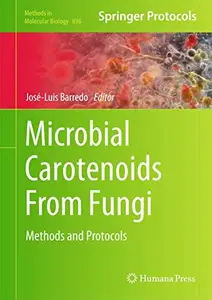 Free Download Microbial Carotenoids From Fungi: Methods and Protocols By Arnold L. Demain, José L. Adrio (auth.), José-Luis Barredo (eds.) 2012 | 290 Pages | ISBN: 1617799173 | PDF | 4 MB Carotenoids are a family of yellow to orange-red terpenoid pigments synthesized by photosynthetic organisms and many bacteria and fungi. They have beneficialhealth effects protecting against oxidative damage, and may be responsible for the colours associated with plants and animals. In Microbial Carotenoids From Fungi: Methods and Protocols, expert researchers in the field detail many of the most up-to-date methods which are now commonly used to study carotenoids. These include methods for the manipulation and metabolic engineering of the Beta-carotene producing fungi Blakeslea trispora and Mucor circinelloides, lycopene production with the yeast Yarrowia lipolytica, peroxisome targeting of lycopene pathway enzymes in Pichia pastoris, and the manipulation of the heterobasidiomycetous yeast Xanthophyllomyces dendrorhous, which produces astaxanthin, a red xanthophyll with large importance in the aquaculture, pharmaceutical, and food industries. Additionally, the book includes a DNA assembler method for construction of zeaxanthin-producing strains of Saccharomyces cerevisiae, production of neurosporaxanthin by Neurospora and Fusarium, and production of torularhodin, torulene and b-carotene by Rhodotorula yeasts. Written in the highly successful Methods in Molecular Biology™ series format, chapters include introductions to their respective topics, lists of the necessary materials and reagents, step-by-step, readily reproducible laboratory protocols, and key tips on troubleshooting and avoiding known pitfalls.Authoritative and practical, Microbial Carotenoids From Fungi: Methods and Protocols, provides practical experimental laboratory procedures for a wide range of carotenoids producing microorganisms. 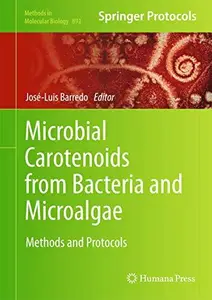 Free Download Microbial Carotenoids from Bacteria and Microalgae: Methods and Protocols By J. Paniagua-Michel, Jorge Olmos-Soto (auth.), José-Luis Barredo (eds.) 2012 | 355 Pages | ISBN: 1617798789 | PDF | 5 MB Carotenoids are a family of yellow to orange-red terpenoid pigments synthesized by photosynthetic organisms and many bacteria and fungi. They have beneficial health effects protecting against oxidative damage and may be responsible for the colours associated with plants and animals. In Microbial Carotenoids from Bacteria and Microalgae: Methods and Protocols, expert researchers in the field detail many of the most up-to-date methods which are now commonly used to study carotenoids. These include methods for the study of canthaxanthin production, construction of carotenoid reporter systems, directed evolution of carotenoid synthases, and improvement of b-carotene hydroxylase catalytic activity are described. Additionally, the book includes methods of DNA fingerprinting for the identification of carotenogenic Dunaliella species, ketocarotenoid biosynthesis in microalgae expressing the beta-C-4-carotene oxygenase gene, characterization of carotenogenesis genes in Anabaena sp., obtaining lutein from microalgal biomass, NMR-based isotopologue profiling of microbial carotenoids, and analysis of diapocarotenoids. Written in the highly successful Methods in Molecular Biology™ series format, chapters include introductions to their respective topics, lists of the necessary materials and reagents, step-by-step, readily reproducible laboratory protocols, and key tips on troubleshooting and avoiding known pitfalls. Authoritative and practical, Microbial Carotenoids from Bacteria and Microalgae: Methods and Protocols provides practical experimental laboratory procedures for a wide range of carotenoids producing microorganisms.  Free Download Microbes: The Unseen Agents of Climate Change by David L. Kirchman English | March 5, 2024 | ISBN: 019768856X | True EPUB | 240 pages | 6.6 MB For billions of years, microbes have produced and consumed greenhouse gases that regulate global temperature and in turn other aspects of our climate. The balance of these gases maintains Earth's habitability. Methane, a greenhouse gas produced only by microbes, may have kept Earth out of a deep freeze billions of years ago. Likewise, variations in carbon dioxide, another greenhouse gas released by microbes and other organisms, help to explain the comings and goings of ice ages over the last million years.
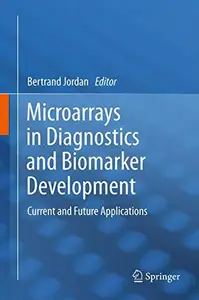 Free Download Microarrays in Diagnostics and Biomarker Development: Current and Future Applications By Bertrand Jordan (auth.), Bertrand Jordan (eds.) 2012 | 240 Pages | ISBN: 3642282024 | PDF | 4 MB Microarray technology has made strong progress over the past decade, and there have also been significant changes in application areas, from nucleic acids to proteomics and from research to clinical applications. This book provides a comprehensive overview of microarrays in diagnostics and biomarker development, covering DNA, peptide, protein and tissue arrays. The focus is on entities that are in actual clinical use, or quite close, and on recent developments, such as peptide and aptamer arrays. A further topic is the miniaturisation towards "nanoarrays", which is expected to have great potential in clinical applications. Relevant issues of bioinformatics and statistical analysis of array data are discussed in detail, as well as the barriers to the commercialisation of array-based tests and the vexing IP issues involved. Thus, the book should be very useful tor active array users as well as to newcomers seeking to make the best choice between different technologies.  Free Download Michel de Certeau: Interpretation and Its Other (Key Contemporary Thinkers) by Jeremy Ahearne English | October 27, 1995 | ISBN: 0745613462, 0745613470, 0804726701, 0804726728 | True PDF | 240 pages | 19.4 MB Since his death in 1986, Michel de Certeau's reputation as a thinker has steadily grown both in France and throughout the English-speaking world. His work is extraordinarily innovative and wide-ranging, cutting across issues in historiography, literary and cultural studies, anthropology, sociology, theology, philosophy and psychoanalysis. |